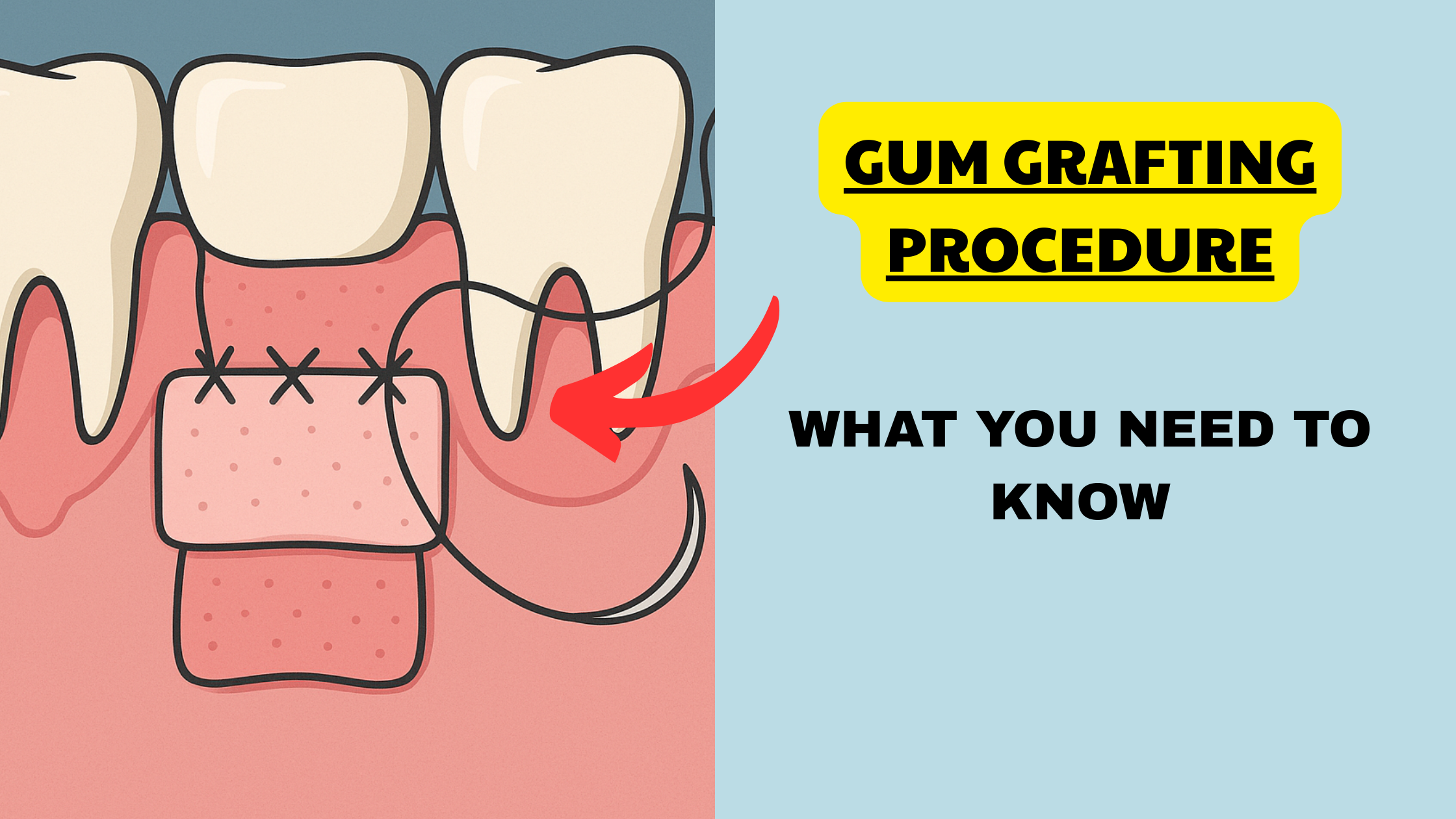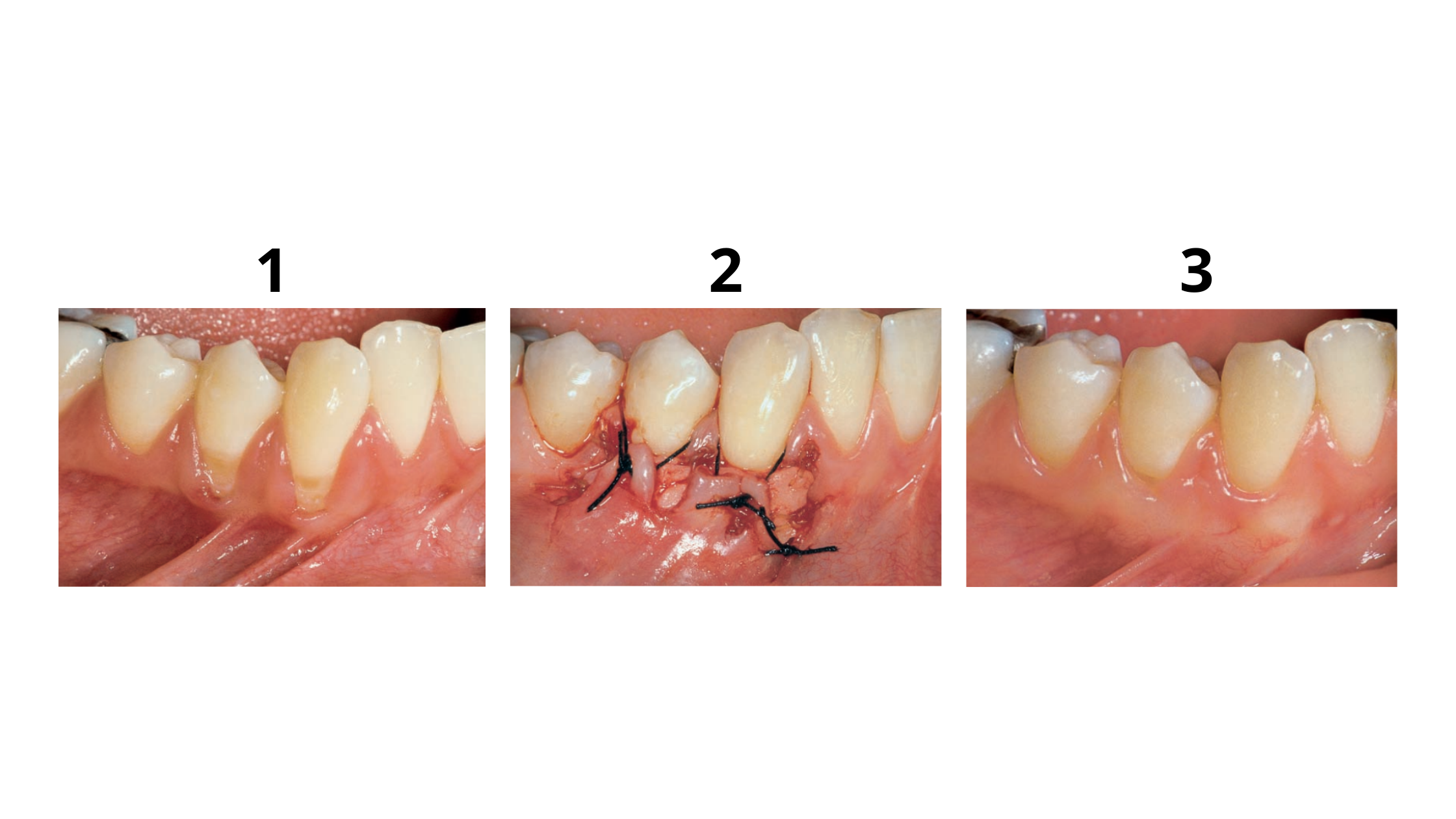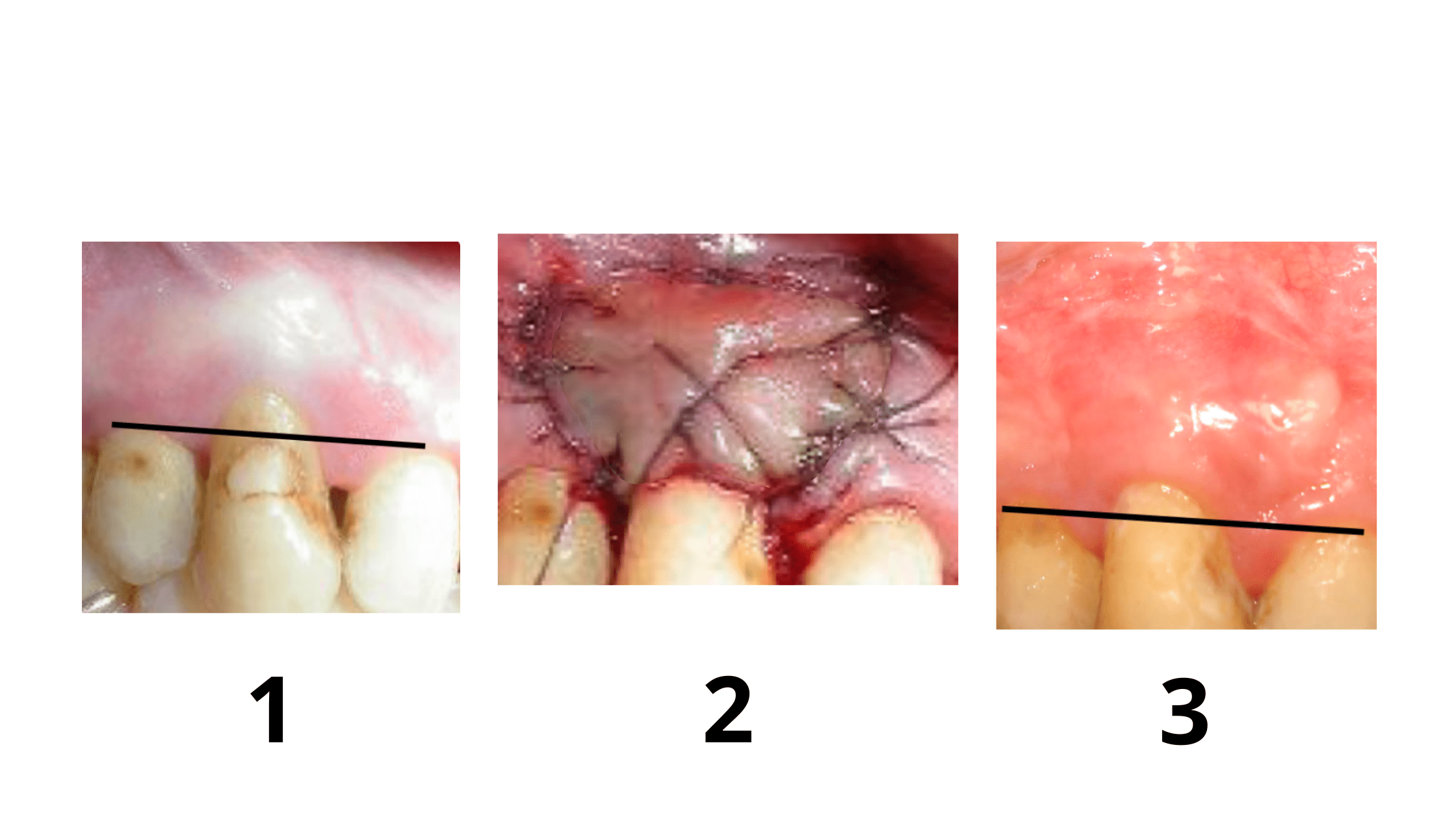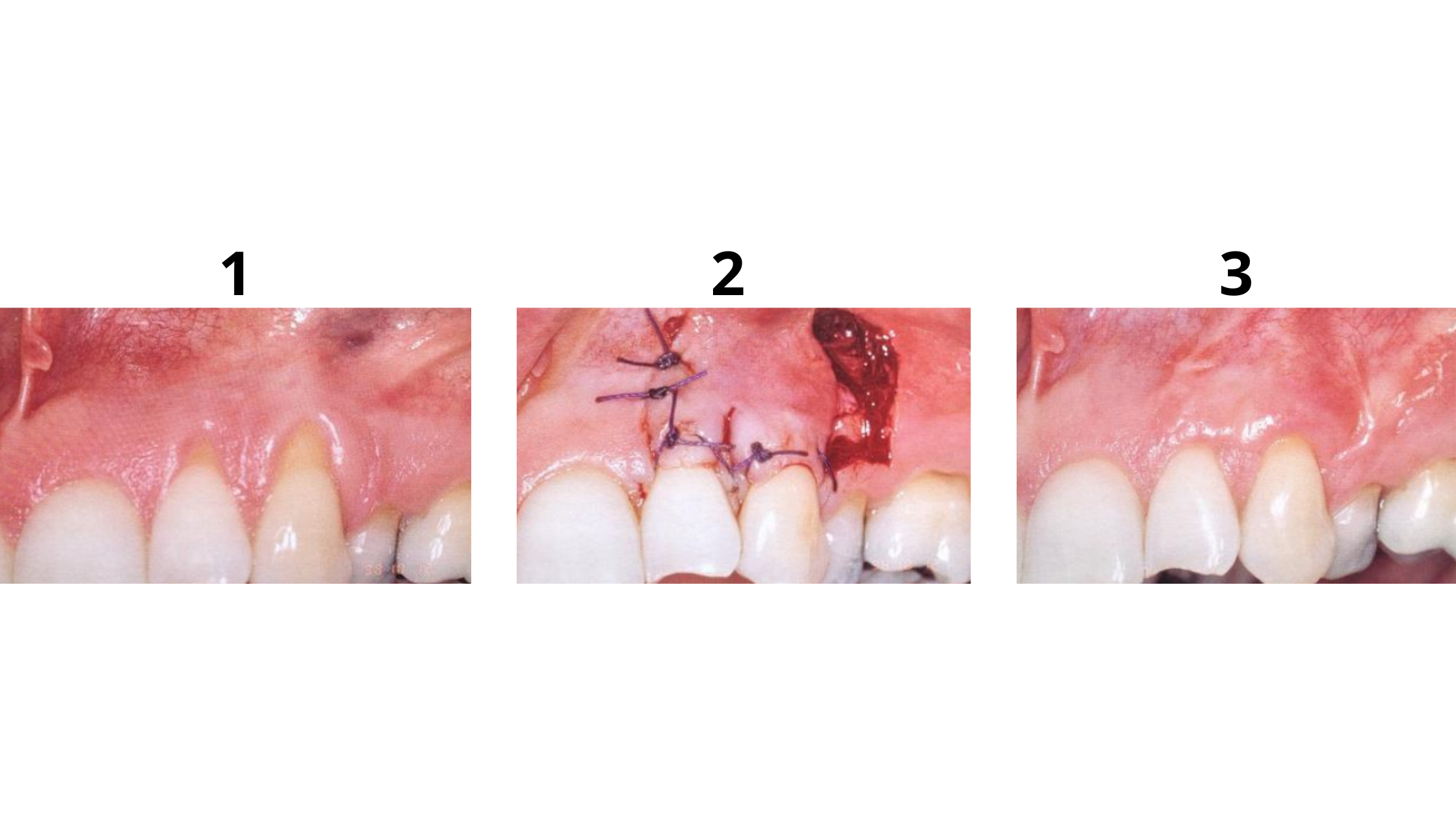Gum Graft Surgery: Techniques, Pros & Cons, and Recovery
 Gum recession is a common dental problem that can affect up to 50% of the world's population at some point.
Gum recession is a common dental problem that can affect up to 50% of the world's population at some point.
It causes the gums to gradually pull away from your teeth, exposing the roots. You may then start experiencing sensitivity when drinking or eating cold or hot foods. This can also cause your teeth to look longer than they used to be, affecting your smile appearance.
Gum grafting is one of the best options to prevent recession from getting worse and to cover exposed roots.
You will learn in this article everything about gum grafting, the procedure, techniques, aftercare, and what to expect.
When would you need a gum graft?
Gum grafting is typically the surgical treatment for gum recession. Before making any decision, your dentist will take many considerations, including the causes, severity of the recession, and its progression.If your gums are stable, not actively receding, and not causing you any problems (such as sensitivity or cosmetic issues), you may not need treatment at all. A gum graft may be needed for the following reasons:
- Your gum recession is progressing: If your gums are actively receding and are likely to worsen in the future, a gum graft may be necessary to cover the exposed roots, strengthen your gums and prevent the condition from progressing further.
- Your teeth are sensitive: Once the roots are exposed, sensitivity often follows, especially to hot, cold, or acidic foods. A gum graft can cover the sensitive roots for greater comfort.
- Cosmetic concerns:
This is one of the main reasons why patients seek treatment for gum recession, especially when the front teeth in the smile zone are affected.
Gum recession can cause many cosmetic problems, including longer-looking teeth and black triangles between the teeth.
The different techniques:
There are different gum grafting techniques. Each of them has its own use, pros, and cons. The three most commonly used are:1. Connective tissue graft:
 This is the most commonly used technique and the gold standard for covering recessions.
This is the most commonly used technique and the gold standard for covering recessions.
In this procedure, a small piece of tissue is taken from the palate (roof of the mouth). The graft is then placed on the receding areas and sutured.
Pros:
- The survival rate of the graft is high
- Provides good coverage of exposed roots
- Good aesthetic outcomes
Cons:
- Requires a second surgical site on the palate, which may cause additional discomfort during healing
- Very technique-sensitive procedure
- The amount of connective tissue available in the palate is limited
2. Free gingival graft:
 Similar to connective tissue graft, this procedure involves taking a piece of tissue from the palate. However, instead of removing only the inner layer, the entire skin layer is removed and attached to the gum.
Similar to connective tissue graft, this procedure involves taking a piece of tissue from the palate. However, instead of removing only the inner layer, the entire skin layer is removed and attached to the gum.
Pros:
- Much more straightforward than the previous one
- It strengthens gums and stops recession
- It can also cover exposed roots
- Provides stable, long-term results
Cons:
- May not provide as much coverage of exposed roots as other techniques
- Lower survival rates than connective tissue graft
- Poor esthetic outcomes (not recommended for front teeth)
- Higher risk of postoperative discomfort and sensitivity
3. Pedicle graft:
 This technique is used when the gum tissue near the affected area is strong enough to support the receding site. A flap of tissue is cut from the gum near the affected area and then moved laterally to the part to be covered.
This technique is used when the gum tissue near the affected area is strong enough to support the receding site. A flap of tissue is cut from the gum near the affected area and then moved laterally to the part to be covered.
Pros:
- It does not require a donor site, as the tissue is taken from the area near the affected tooth
- Shorter healing time
- Great aesthetic outcome
Cons:
- Limited by the amount of gum tissue near the affected area
- It may not provide as much coverage of exposed roots as other techniques
Are there alternatives to gum grafting surgery?
The main drawback of gum grafting is that it often requires a second surgical site (the donor site). This results in a longer healing time and increased discomfort.To overcome this problem, new tissue engineering methods can help your gums grow back without having to take soft tissue from your palate. These techniques include:
- Alloderm grafts: The grafted tissue comes from a human donor. Before being used, it is carefully treated to remove any living cells or germs that could cause rejection or infection.
It has become increasingly popular in recent years as an alternative to traditional gum grafting techniques.
Its collagen, elastin, and other protein content promotes optimal healing and successful integration. - Growth factors: Growth factors are naturally occurring substances that your body uses to promote healing and regeneration. By applying these biological substances to your gums, we hope to speed up the healing process and help your body regenerate some of the gum tissue.
The best known is PRP (platelet-rich plasma).
What to expect after the procedure?
After the procedure, the graft will go through several stages before healing completely. It is common to experience some discomfort and swelling for the first few days.Here's what you can expect after the procedure:
- Pain and discomfort: You may experience some pain or discomfort at the surgical site for a few days after the procedure. Your dentist or periodontist may prescribe pain medication to help manage this.
- Swelling: Some swelling around the surgical site is normal for the first few days after surgery. Applying an ice pack to the area for the first 24 hours, for 10 minutes every hour, can help reduce the swelling in the following days.
- Bleeding: Some bleeding is normal, especially in the first few hours after surgery. To control it, you can apply a cotton ball with very light pressure. If the bleeding is too heavy or persistent, talk to your dentist.
Some tips for optimal recovery:
After the procedure, there are things you should do and things you should absolutely avoid to help the graft survive and integrate.1. Diet:
You will need to stick to a soft food diet for the first few days after the procedure. Avoid hot or spicy foods, as well as foods that are difficult to chew or could get stuck in the surgical site.
2. Oral hygiene:
Good oral hygiene is key after any surgical procedure. This will help keep the site clean and prevent infections.
However, be sure not to rinse your mouth or spit vigorously during the first day. You can start rinsing with salt water on the third day.
Also, don't brush around the surgical site for the first week, as this may dislodge the graft. Instead, you can use cotton swabs to gently clean this area.
Your dentist or periodontist will give you more instructions on how to care for the surgical site and when you can resume your normal oral hygiene routine and diet.
3. Follow-up appointments:
You will need to follow up with your dentist or periodontist to monitor the healing process and catch any signs of complications early.
The potential complications:
While gum graft surgery is generally safe and effective, there is a small risk of complications. It's important to be aware of these to spot them in time and act quickly.Here are some potential postoperative complications:
- Infection: It's rare for a gum graft to get infected. Signs include persistent swelling, redness, pus coming out of the wound, a bad taste, and fever. If you think you might have an infection, contact your dentist or periodontist right away. Antibiotics might be prescribed to clear up the infection and keep the graft from failing completely.
- Bleeding: Some bleeding is normal the day after surgery. But excessive and persistent bleeding can be a sign of a complication. If you can not control your bleeding by applying light pressure to the surgical site, contact your dentist or periodontist immediately.
- Graft failure: In some cases, the gum graft may not take and integrate properly. Signs of graft failure include persistent pain, bleeding, peeling or loosening of the graft, and abnormal and persistent white discoloration.
- Scarring: Gum graft healing usually leaves no scarring. But sometimes, white lines may remain, which can affect the appearance of your gums. In this case, additional treatment may be necessary to correct the scarring.
- Does gingival recession require surgical treatment? https://www.ncbi.nlm.nih.gov/pmc/articles/PMC4907322/
- The etiology and prevalence of gingival recession https://pubmed.ncbi.nlm.nih.gov/12636127/
- Use of autologous platelet rich plasma to treat gingival recession in esthetic periodontal surgery https://www.ncbi.nlm.nih.gov/pmc/articles/PMC3768186/
- Postoperative complications following gingival augmentation procedures https://pubmed.ncbi.nlm.nih.gov/17209793/
- Color Atlas of Dental Medicine: Periodontology - Book by Edith Rateitschak-Pluss and Herbert F. Wolf
- TAUX DE RECOUVREMENT DES RÉCESSIONS GINGIVALES EN FONCTION DU TRAITEMENT APPLIQUÉ http://docnum.univ-lorraine.fr/public/BUPHA_TD_2014_MAGAR_CELINE.pdf